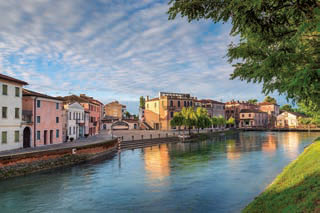 From a recent survey carried out by Assocalzaturifici, it has emerged that a good 63% of the association’s member businesses work with the French market, a clear majority that has contributed to positioning France at first place in the top destinations for Made in Italy worldwide. By now, for a number of seasons, this neighboring country beyond the Alps has taken the lead over Germany as the main end market for Italian products: a position that it seems ready to hang on to, notwithstanding the downtrend characterizing sales since 2015.
From a recent survey carried out by Assocalzaturifici, it has emerged that a good 63% of the association’s member businesses work with the French market, a clear majority that has contributed to positioning France at first place in the top destinations for Made in Italy worldwide. By now, for a number of seasons, this neighboring country beyond the Alps has taken the lead over Germany as the main end market for Italian products: a position that it seems ready to hang on to, notwithstanding the downtrend characterizing sales since 2015.
After a 2013 characterized by doubledigit growth and a 2014 with opposing numbers in terms of quantities (down by -3.6%) and values (on the rise by +2.9%), Italian exports to France in 2015 decreased to 37.435 million pairs of shoes for a value equal to 1,316.65 million euro, registering a -8.9% drop in quantity and -3.2% decrease in value (notwithstanding the simultaneous increase in the average price to 35.17 euros a pair, +6.2% over the previous year). This trend was reconfirmed also during the first nine months of 2016, which was characterized by a further decline (-5.9% in quantity and -1.2% in value over the same period in 2015).

Assocalzaturifici ascribes the slowdown to the difficult international macroeconomic context, which is affecting not only consumption by French families, but also the performance of designer labels:
More than of economic origin, the fall in Italian exports to France is a consequence of the difficult situation that international markets find themselves in, – explains Matteo Scarparo, Head of Global Trade at Assocalzaturifici, –This can be attributed in France, as in Italy, to a drop in the expenditures of families, which is more pronounced, above all, in the apparel/accessory industry. Even the retail of leading French groups has felt the repercussions, just like designer labels, which have gone from double-digit to single-digit growth: aspects that have ended up affecting Italian exports, which are made up by a large number of subcontractors.
Instead, the terrorist threat seems to have played a much less important role in the final sales results:
It has certainly influenced the number of tourists in France and, above all, in Paris, – comments Matteo Scarparo, –but it has not had a significant impact on Italian footwear exports.
What are the association’s predictions for the market?
We do not expect a reversal of the current trend, nevertheless we believe that there will not be further declines…, – concludes Matteo Scarparo, –rather, we will have to wait and see if better figures arise from the next edition of the MICAM.

Among the regions in Italy that do the most business with the French market is the Veneto region, which held a share equal to 37.4% of total exports to France during the first nine months of 2016. Among the Venetian districts, Riviera del Brenta boasts of a long history of collaboration with this market: the expertise, quality, and master crafts workmanship of Brenta production has led to the qualification of its businesses as subcontractors to some of the most important designer labels, for quite some time now. In recent years, the territory between Vigonza, Fossò, and Fiesso d’Artico has also become an area for direct investments by French maisons, which have opened up their own factories here, together with research centers specialized in footwear. One such example is the luxury label, Lvmh, first among the investors, which at the start of the millennium purchased the Rossimoda footwear manufacturing facility, where today it produces the footwear brands of Cèline, Givency, and Emilio Pucci. Moreover, it set up the base of operations for Louis Vuitton footwear in Fiesso d’Artico, while also choosing Fossò for Christian Dior. In 2017, it will launch the new production facility of Yves Saint Laurent in Vigonza, and there are even rumors concerning the future arrival of Chanel footwear in the territory…

This is why Riviera del Brenta remains unscathed by the crisis: it ended 2015 with a turnover of 1.88 billion euro, and a stable production trend of 19.4 million pairs produced by its 126 footwear manufacturers.
Notwithstanding the ups and downs of the current economic situation, Riviera del Brenta’s production maintains a stable trend that is in the black: after all, if you make a good product that is high quality there is always someone willing to buy it, – comments Siro Badon, President of Acrib, the Riviera del Brenta Association of Footwear Manufacturers, –This is why buyers and French fashion houses have continued to show a preference for our product: for these reasons, our predictions for the future are positive, and we hope to continue to work as we always have with the French market, supported by the professionalism and master crafts workmanship typical to our production.
 Historic market for Vigonovo’s Moda di Fausto, France generates 20% of this label’s turnover, for a value of 2 million euro and 25 thousand pairs a year:
Historic market for Vigonovo’s Moda di Fausto, France generates 20% of this label’s turnover, for a value of 2 million euro and 25 thousand pairs a year:
Currently France is going through a difficult economic phase, above all, in Paris, which experienced a significant fall-off in consumption after the attempt at the Bataclan, – explains Gilberto Ballin, Sales Director of the company, –That tragedy represented a turning point, insomuch that you could say there was a before and after 13 November.

Nevertheless, Gilberto Ballin trusts in the stability of the French market:
Buyers and sales points are dealing with the sell-out and leftover warehouse stock… However, they know that whoever stops moving forward is lost and that new products must always be presented in store windows in order to attract customers to the store… So, I am sure there will definitely be French buyers at the next the MICAM.
Certainly, they will have more doubts than in previous seasons that were more successful, and the level of confidence will not be the best, but the French market is still alive and well. French retail is still fairly strong: multi-brand stores are resisting and have not yet yielded to the big chains dominating the market, which instead happened in Germany. This makes our job easier: in fact, retailers interested in standing out and presenting products different from the competition, do their research and purchase Italian products. A lot of research always goes into fashion, and not in the sense of extremes, but in the classical sense, which focuses above all on quality, added value, elegance, and attention to detail: exactly what our company offers. In light of all this, we expect that theMICAM will confirm the stability of the market: certainly, we do not expect great feats from France, but we believe that we will maintain our shares.
More pessimistic is the outlook of Dyva, another Brenta brand of women’s footwear:
The French market has been taken over by inexpensive products” – comments Liviana Cacco, head of the company’s finances, – from 2010 on, the French market was subject to an economic crisis, with less willingness to invest in high-cost products. By now, Riviera del Brenta footwear has be- come too expensive: considering its quality and intrinsic value, the price range falls just under that of the main designer labels. Having to decide where to invest, French retailers prefer to buy designer labels, which offer not only a product, but also a commercial allure. Most other French retailers have instead turned to inexpensive products: maybe even Italian, but definitely not 100% Made in Italy with its relative costs, but only assembled in Italy.
This trend has affected the turnover of Dyva:
The transformation of the French market has determined a significant downtrend in the turnover generated in France, – explains Liviana Cacco, -insomuch that our sales in the area have dropped from 50% to less than 10%. In other words, we only work with two important French customers… Moreover, – concludes Liviana Cacco, -the crisis in French footwear retail is once again transforming Riviera del Brenta manufacturers into subcontractors for big designer labels, to the disadvantage of their very own brands’ production. Businesses are starting to once again produce for brands and designer labels, in order to maintain their production levels.




